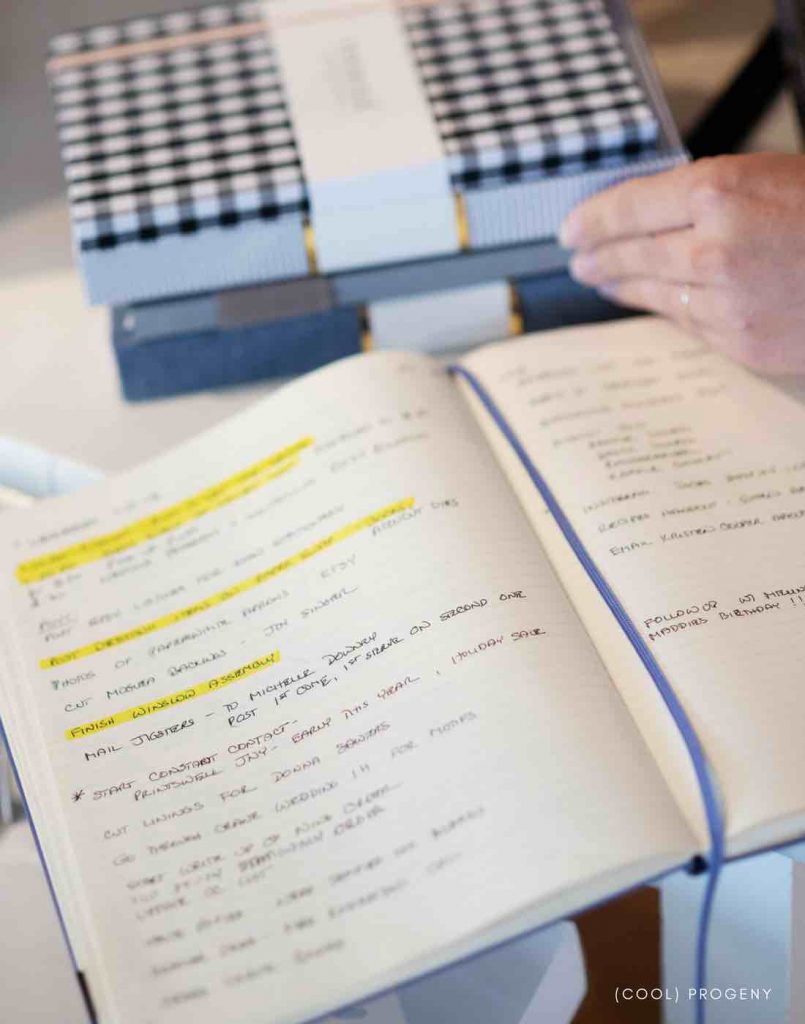“I was overwhelmed,” said Hannah Rodewald, owner of The Pleasure of Your Company and co-founder of Women’s Daily Post. “Trying to keep the businesses, and Writes for Women, and my work with United Way, and life, … trying to keep it all straight was daunting.”
Overwhelmed and daunted are two self-descriptors I frequently hear when talking to moms. Realities of modern day #momlife. It’s how we handle those feelings that matter.
Hannah handled it by starting a bullet journal.
What is bullet journaling? A customizable — and forgiving — organizational system. For some of us, it might be the holy grail of goal management. Notice I said goal management, not time management. If you have a lot of daily appointments that you need to keep straight, it probably won’t take the place of your planner or calendar. It could be a to-do list, sketchbook, notebook, and diary. Or all of those things.

“I read a lot of how to get control of your life books,” Hannah told me. “And the basic message was that your brain is meant for thinking, not for storage. I just didn’t have the bandwidth to keep everything straight.”
When you have a lot on your plate, you’re more apt to feel stress about getting everything done. Add in daily distractions from life, family, friends, work, social media, text messaging… soon mentally juggling your to do list is a failed endeavor. Things get cloudy. Worse, you feel forgetful or like you’re failing.
Bullet journaling forces you to commit your goals and tasks to paper. It allows your brain to stop firing neurons on “to dos” and makes space for your brain to develop a plan to accomplish those tasks.

“When you think to yourself ‘I need to buy a birthday present,’ your brain can’t let that go until the birthday present is bought. It’s why those nagging little things wake you up at night,” said Hannah. “When you write it down, your brain knows it’s now on your to do list. It lets it go.”
For Hannah, the system has literally made her feel better and more in control without requiring too much time. She spends about 5-10 minutes per day adding to the journal. Every few days she’ll take a look at things that haven’t been accomplished and decide wether to move them to a new list or abandon them altogether.
“I’m a person who likes to see progress,” she said. “There is nothing I like more than a yellow page!”
The yellow page is one of the things I like most about Hannah’s system. Instead of crossing things off her list, she highlights them. That way she can go back and review what she has accomplished rather than decipher something that’s been scratched out.
So how do you get started with bullet journaling? With a brain dump. Grab your new notebook and write down what your goals are for home, work, or a particular project. Make one page an inspiration board for redecorating a room. Another page could be for organizing great career advice you’ve gotten. Create a page for funny things your kids say that you want to remember. Trying to track habits? Bullet journaling is a great option for that as well.

In her own journal, she keeps daily lists of tasks to complete and appointments. She also has a page with websites she loves and another with books to read (and those that have been read).
“There really isn’t a wrong way to do this,” said Hannah. “The key is to make the system work for you.”
Editor’s Note: This article is written by Heather Walsh, editor of (cool) progeny, and originally appeared on coolprogeny.com. Photos by Laura Black.




